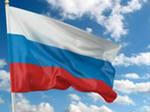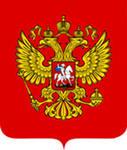The Russian Federation

Russia shares borders with sixteen countries. In the west, Russia shares them with European countries - Norway, Finland, Estonia, Latvia, Lithuania, Poland, Ukraine and Belarus. In the Caucasus, it has borders with Georgia and Azerbaijan. From the Caspian Sea on the east stretches the longest in the world (about 7,000 km) continuous land border with Kazakhstan. In the east, Russia shares borders with Mongolia, China and North Korea. By sea Russia shares borders with Japan and the USA.
The Russian Federation consists of 85 regions (from 1 January, 2008, there are 84 regions).
Russian population lives in 2940 urban areas (cities and towns) and 142 thousand villages.
The country has 13 cities with a population of over a million people. They are: Moscow (10.4 million inhabitants), St. Petersburg (4.6 million people), Novosibirsk, Nizhny Novgorod, Yekaterinburg, Samara, Omsk, Kazan, Chelyabinsk, Rostov-na-Donu, Ufa, Volgograd and Perm. Every third urban dweller of Russia lives in one of these cities.
Capital of the Russian Federation - Moscow is one of the twenty largest cities in the world.
Political system
Russia is a federal republic.
Head of state: the President, Vladimir Putin, who was elected by universal suffrage for six years period. According to the Constitution, the president has several major permissions: leads the foreign policy; is the supreme commander of the armed forces; appoints with the consent of the State Duma the Prime Minister; makes a decision on the resignation of the Government. By the proposal of the Prime Minister, he appoints the Deputy Prime Minister and the Federal Ministers, also he dismisses them. The President heads the Security Council, appoints and dismisses the command of the Armed Forces. He has the right to propose to the State Duma the candidate to be the chairman of the Central Bank (not member of the Government). In the case of aggression or direct threat of aggression, the President has the power to declare martial law throughout the country or in certain territories, but must immediately notify its decision to the Federal Assembly. He has the right to issue decrees, which are obligatory to the entire territory of Russia (ordinances must not conflict with federal law). Also he has a number of other authorities.
Legislative authority: bicameral Federal Assembly (the State Duma, consisting of 450 deputies elected for four years period and the Federation Council, consisting of 178 members, by two representatives from each of the Federation party).
Language
Official (state) language throughout the Russian Federation is Russian. Nations of the Russian Federation have a guaranteed right to preserve their native language
Currency
Currency - the ruble (1 ruble = 100 copecks).
 Flag of the Russian Federation (the Flag of Russia)
Flag of the Russian Federation (the Flag of Russia)
Description:
The national flag of the Russian Federation is a rectangular cloth, consisting of three horizontal stripes: the top - white, the middle - blue, the bottom - red.
Currently, most often (unofficial) is used the following interpretation of the values of the Russian flag colors: white means peace, purity, integrity, excellence; blue - the color of faith and fidelity, constancy; red color symbolizes energy, strength, blood, shed for fatherland

The coat of arms of the Russian Federation: The State coat of arms of the Russian Federation is a golden two-headed eagle, placed on a red heraldic shield; above the eagle - three historical crowns of Peter the Great (above heads - two small and over them - one large), in claws of the eagle - the scepter and orb, on the breast of the eagle on a red shield - a horseman, slaying a dragon.
Golden two-headed eagle on a red field keeps the historical continuity in colors of coats of arms of XV - XVII centuries. Picture of eagle goes back to images on the monument of Peter the Great. Above the heads of the eagle are showed three historical crowns of Peter the Great, symbolizing the new conditions of the sovereignty of the Russian Federation as a whole and its parts as well, Federation parties; in its claws - scepter and orb, embodying the state authority, and the united state; on the chest - image of a horseman, slaying the dragon. This is one of the oldest symbols of the struggle between good and evil, light and darkness, defending of the homeland. Restoring the two-headed eagle as the State coat of arms of Russia represents the continuity of Russian history. Today Russian coat of arms - a new coat of arms, but its components are deeply traditional, it reflects the different stages of the country's history, and continues them in the threshold of the third millennium.
June 12 is the Independence Day of Russia.
























